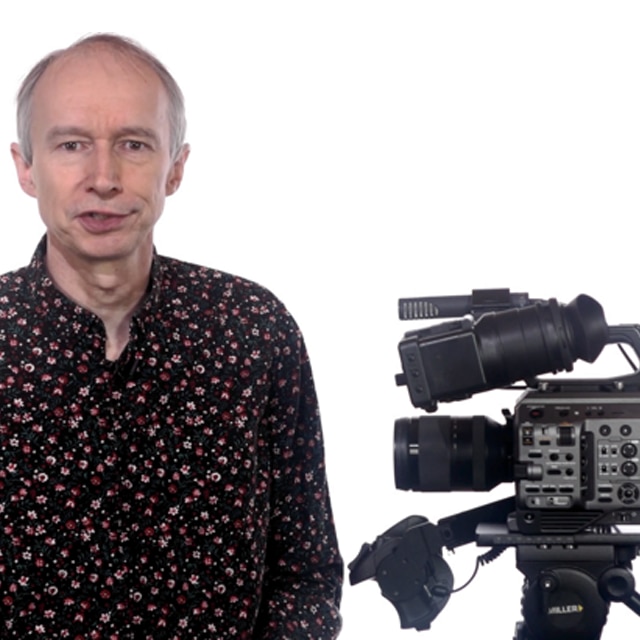Electronic Variable ND Filter in action
Discover the real-world benefits of this amazing technology.

What is 'Electronic Variable ND Filter'?
Sony’s Electronic Variable ND Filter can be seamlessly varied while shooting because of its innovative technology, which is completely unlike conventional technology such as a rotating filter wheel or polarizing ND Filters. It is also critical to note, Sony’s technology is optically based rather than using image processing.
There are three different ways to use this filter:
- Use the dial on the right side of the camera, seamlessly altering image exposure while shooting. The filter has a wide range from 1/4 to 1/128
- Select Auto ND and the camera will proactively adjust the filter density to find the best exposure level for shooting. This is very helpful, for example, when shooting outside with variable lighting conditions. The Electronic Variable ND Filter automatically adjusts the density so that the exposure will remain the same no matter how light levels change
- Set a fixed filter level by simply rotating the filter knob — just like working with a conventional optical filter wheel. The default settings are 1/4, 1/16, and 1/64. However, it is possible to change these three settings to whichever values you prefer. For example, you can set filter #3 to 1/128 so that you can go outside on a sunny summer day for shooting
Seamless exposure control
What would you do if you wanted to change the exposure in your camera?
In general, you can use the iris to change exposure, but this also changes the depth of field. For example, if we want to make the image brighter, the background will be blurred because the iris is wide open. The other option is to use gain control. However, the amount of digital noise will disturb the image because the image brightness is controlled by digital image processing. Technically, altering shutter speed can change the exposure which is the typical method when shooting still images, but it not suitable for video shooting. Moving objects will look different, and in some cases it is unnatural. The Electronic Variable ND Filter offers unparalleled optical based seamless control over exposure, with none of these side effects associated with previous techniques. Many professional cameras have ND filters inside the camera body. When changing the ND, the camera physically swaps the filter and you will see it changing in the image. On the other hand, once the Electronic Variable ND Filter has been activated, it can be adjusted seamlessly from 1/4 to 1/128. This very wide-range is equal to two to seven stops. Alternatively, use Auto ND to attain the exposure you prefer and concentrate on framing your shots. No need to worry about manually controlling exposure any more!
Seamless depth-of-field control
One of the best features of the Electronic Variable ND Filter is that the camera can adjust the exposure seamlessly and maintain the same aperture setting thanks to Auto ND mode. Alternatively, you can use Auto ND to seamlessly control the depth of field within one shot – something that has not been possible before. The operation is very simple. First activate the Auto ND. The camera will adjust the image brightness at the optimal level. And then, manually control the iris ring on the lens to close or open the iris. The Electronic Variable ND Filter takes care of exposure and only the depth of field will change. In general, the image gets brighter when opening the iris. However, in this case, the Electronic Variable ND filter gets darker to maintain the same exposure. As a result, the depth of field reduces when opening the iris. On the other hand, the image gets darker when closing the iris, but at the same time, the filter gets clearer. The result is a sharper image when closing the iris. Thanks to the seamless control of both the Electronic Variable ND Filter and smooth iris adjustment, the camera can produce creative effects that were simply impossible before.
Benefits with third-party lenses
One of the E-mount lens system’s best features is that the flange back distance is just 18mm, shorter than other lens mounts. Consequently, lens adapters can provide the opportunity to choose from a huge number of third party lenses from outside the E-mount system. However, there are some lenses which do not have a dedicated lens ring to control the iris, or have an iris ring that does not rotate seamlessly but is stepped. These features are quite common in still image lenses and are not normally suitable for the seamless iris control required for general movie shooting. The Electronic Variable ND Filter enables control of a wide range of exposure without having to worry about setting the iris. As you have the freedom to adjust the iris independent of the exposure control, you can set and hold the iris wherever the image quality is at its best – typically around F5.6-F8. In addition, when Auto ND is activated, the entire camera system works in AE mode without touching the lens iris. When shooting outside in variable lighting conditions, the Electronic Variable ND filter will proactively and automatically find the best exposure to achieve the highest possible image quality.
Use the best iris range
Are you aware of the resolution loss effect when closing the iris? It is caused by diffraction, a basic aspect of light theory. As the iris is closed, the light path is narrowed which results in diffraction and an inevitable loss of resolution. To avoid resolution loss due to diffraction, you have to keep the aperture reasonably open and keep the light path at certain level. The Electronic Valuable ND Filter can help with this, seamlessly changing the filter density to provide the best exposure while still keeping the iris open. So the Electronic Variable ND filter not only offers an excellent way of controlling exposure, but also maintaining a nice, sharp image.





